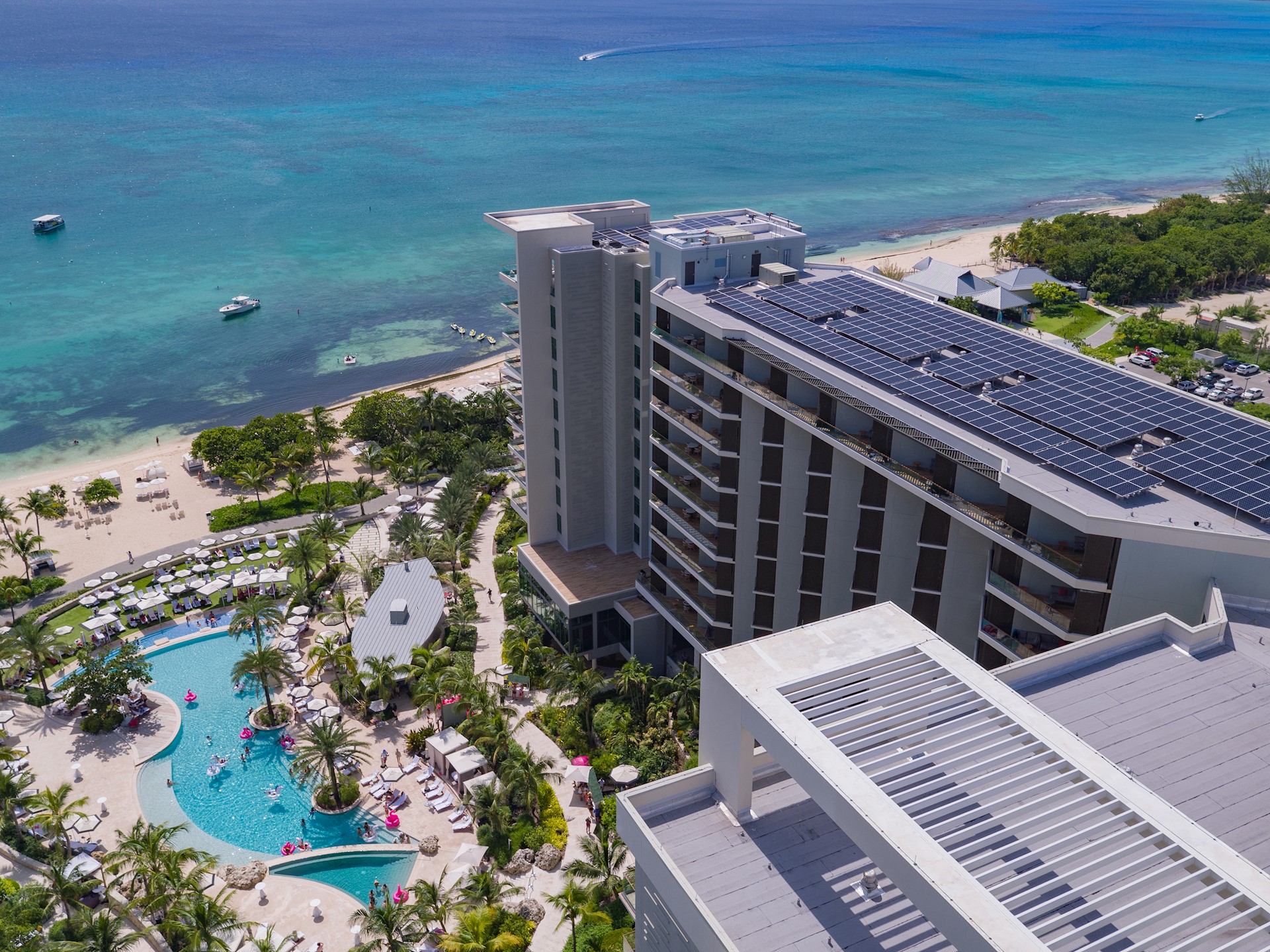
Sustainability at Seafire
01 Oct 2016

01 Oct 2016
Sustainability isn’t just a buzzword, but a way of life at Kimpton Seafire Resort + Spa and The Residences at Seafire.
As one of less than 200 LEED® Silver certified resort-residential properties worldwide, Seafire features best in class-sustainable design, building practices and operations.
Sustainability from the ground up
The resort and residences sit on the site of the former Courtyard Marriott hotel and the concrete rubble left over from the demolition of the hotel was used as fill in preparation of the Seafire construction site. Additionally, the pavers at the hotel site are partially composed of recycled glass produced by Dart’s glass crushing facility.
Keepin’ cooler for less moolah
With average temperatures of 85 degrees Fahrenheit, air-conditioning is a must in Cayman. However, keeping cool can have a high financial cost. Enter geothermal air conditioning. Seafire has the distinction of having the most efficient ground-source geothermal air-conditioning system in the Cayman Islands which is up to 40% more efficient than traditional systems.
Sustainable lighting inside and out
Seafire’s lighting is sustainable inside and out. The lighting inside the resort and the residences makes use of LED lights exclusively. LED bulbs last longer than traditional bulbs as well as releasing less heat energy lessening the need for air conditioning.
Seven Mile Beach is home to a small, but significant population of nesting sea turtles. To help preserve this population all outdoor lighting near the beach at Seafire is turtle-friendly, meaning that all light is angled downwards to prevent it from shining on the beach as nesting turtles and hatchlings confuse artificial light with the moonlight that directs them towards the sea.
Harnessing the power of the sun
Solar energy just makes sense on an island with more than 240 sunny days per year. The resort and residences generate energy via a 143,000-watt solar array, one of the largest in the Cayman Islands.
Set in harmony with nature
With a generous 12-acre site, the design team was able to locate the structures east of the natural vegetation line. This allows for the beach’s natural dynamic movement, preventing beach erosion.
No rainy day is wasted at Seafire
On occasions it rains in paradise, and those rainy days are never wasted at Seafire. Several large cisterns on site collect rainwater, which is then used to water the lush landscape of the resort grounds. Additionally, a reverse osmosis system desalinates the brackish groundwater (a by-product of the geothermal cooling process) to supplement the harvested rain water. The landscaping design also makes extensive use of native plants that, on average, require less water than their exotic counterparts.